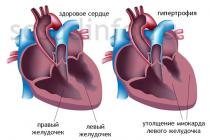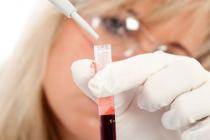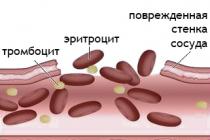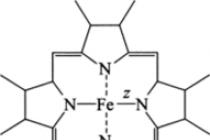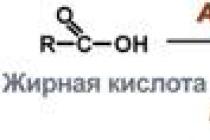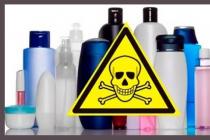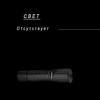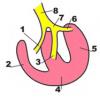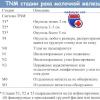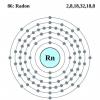Development HR
-brand through the assessment of personnel in the M8 company,
or How to develop with pleasure
So, we have come to the final stage of personnel assessment in the M8 corporation. Let me remind you that the assessment was carried out completely automatically: with the company's programmers, they specially developed an interface for assessing and presenting the results.
The assessment of employees consisted of assessments of qualitative parameters (compliance of the employee's behavior with the standards of behavior in the company) and quantitative (indicators of business qualities and professional knowledge).
Development of tools for 360 ° assessment
The employee's compliance with the standards of conduct in the company was assessed using the 360 \u200b\u200b° method. It would be more correct to call it the 270 ° method, because no customer evaluations of employees were conducted. We did not change the format of the assessment, but changed the content, focusing on the validity and minimization of subjectivity in the assessments. For each quality assessed (corporate, team orientation, leadership, customer focus, achievement orientation, stress resistance, non-conflict and work motivation), a conceptualization and operationalization procedure was carried out.
1.
Management's expectations of their employees have been clarified.
2.
Specific behavioral examples of the manifestation of each quality were prescribed, corresponding to the content of the work of employees in the company.
Now the employee's assessment for each quality consists in choosing one of five behavioral examples that are more consistent with his behavior. Behavioral examples are formulated in such a way as to exclude unambiguously negative characteristics. A point is assigned to each example (hidden to the evaluator). With the new assessment, behavioral examples for each quality are mixed in the program, and the assessors do not have the ability to automatically select the "lowest" or "highest" marks, since characteristics are displayed out of order in the list.
Photo: meeting room of M8 Corporation
Example (Assessment of Team Orientation)
Instructions
: Choose from the proposed options only one item that characterizes the person you are currently evaluating better than others.
Feature options
:
1.
Prefers to do the work independently. If the work is not fully successful, then only the management is asked for advice. Not focused on helping colleagues, he is rarely asked for advice. He prefers not to discuss his decisions with colleagues.
2.
Discusses with colleagues only those decisions that directly concern them. He can help in work matters if you contact him, but he does it reluctantly.
3.
In fulfilling the assigned tasks, he focuses not only on his own needs, but also takes into account the needs of colleagues. Taking into account the opinion of colleagues when making decisions. I am ready to help with advice to an employee if it is related to the fulfillment of his professional goals.
4.
He is ready to help when colleagues ask for help, even if it is not related to his professional goals. I am ready to discuss my decisions with employees and change decisions in favor of the interests of the team.
5.
Not only responds to the requests of colleagues, but also offers his help when he sees the employee's difficulty. In decision-making, he is focused on the opinion of colleagues, in the event of controversial situations, he organizes a discussion and tries to achieve mutual understanding.
Writing each option this way made the assessment process both easier and harder for the assessors. On the one hand, there is no longer a need to subjectively choose points and to doubt that he gave someone a "two" or, on the contrary, gave "fives" to everyone. Now it is easy to choose an answer option, you just need to compare it with the real behavior of the employee who needs to be assessed. On the other hand, reading detailed specifications will take a little longer at the beginning. But we did it deliberately - in order to improve the quality and reliability of the assessment.

In the photo: Professionally designed honor board at M8 Corporation.
Development of professional assessment tools
Professional assessment was carried out for all divisions of the company and included tests and tasks on the professional knowledge of employees, knowledge of the processes in the company, as well as quantitative sales results and assessment of the quality of sales for sellers. The development of professional tests that are adequate to the actually implemented functions in the company turned out to be a rather laborious process. And he bypassed us. The management entrusted the development of professional tests to the heads of departments. A unified format of test items was chosen, all developed tests were double-checked by the management for compliance with the items to the requirements and the desired level of difficulty.
We joined at the stage of approbation of professional tests, analysis of the clarity and unambiguity of test formulations for staff.
In order to make the professional assessment more flexible, programmers created such a shell for passing professional tests, which allowed not only choosing the correct answer from several options, but also independently writing answers to open questions. The answers to such questions were assessed by experts (they are the leaders responsible for a particular test). To avoid evaluators' bias, the names of those who answered the questions remain hidden until the expert evaluates the correctness of the answer. Only after that the results become visible both to the employee himself and to his evaluator.
When presenting the results of a professional assessment, we again focused on mandatory feedback: all errors and inaccuracies made when passing the tests are displayed in the results to the employee. It is important that the assessment is aimed at ensuring that employees develop, incl. learning from your mistakes.

In the photo: Distinguishing mark "The best milling machine operator" of the M8 Corporation
Development of tools for assessing the quality of sales: "Mystery Shopper"
This assessment has become an integral part of the professional assessment of sellers. We conducted it using the Mystery Shopper method. Typically, when organizing such an assessment, we try to select the most environmentally friendly methods of verification, taking care not to cause undue discomfort to employees of the customer companies. It is possible to organize a mock-up of telephone and face-to-face sales using well-trained and artistic buying agents, but such an assessment is often unnecessary and, in terms of preparation costs, does not always pay off the result. For the M8 company, it was decided to use a different method.
To understand how we organized the M8 Mystery Shopper, you need to know a thing or two about the company. All conversations from the company's landline phones are recorded. All records are stored in the system. All employees have access to these records. And none of them are particularly interested in the opportunity to listen to a friend. The culture of communication in the company is open. Therefore, the option we chose fit perfectly with the culture of the M8.
To begin with, a checklist with checkpoints for checking conversations was developed with the key employees of the company responsible for training salespeople. It was decided to check 3 types of calls: calls from new customers, calls from regular customers and calls from dissatisfied customers (the last option had to be abandoned, since there were few such calls in the database and the ratings for them were invalid).
We prepared a specialist for evaluating calls using a checklist, clarified controversial issues and nuances of sales. For each type of call, our specialist selected 3 calls in the base and put marks on them in the checklist.
It's important to mention that even the telephone sales checklist was automated by the company's programmers. For our specialist, a workstation was equipped with access to the call database and an interface for making notes. All marks were automatically summed up by the program, added to the overall quantitative assessment and, together with comments, were displayed on the employee results pages.
Thus, employees had the opportunity not only to see the final result, but also to read comments, see checklists with their marks and independently listen to calls in order to understand inaccuracies in their work with clients.

On the picture. Workplace for evaluating telephone sales. The monitor shows the interface for making marks by the evaluator and a large mug of coffee - an essential tool for any observer.
Sociometric assessment of the team (implementation is planned later)
As we developed the assessment interface, we decided to add sociometric assessment (analysis of microgroups and employee communication in a team). To do this, when evaluating each employee, 2 questions appear near his photo:
1. If you were instructed to independently select five employees from the company to your team, would you choose that person?
2. If you had the opportunity to travel with five company employees, would you choose this person?
A hint note appears under each question in case of misunderstandinginstructions or wishes to change your answer: You have already chosen 5 people: P. Petrov, I. Ivanov, V. Sidorov, I. Krug, O. Rubinstein. Do you want to change your choice?
In this form, sociometry is a simplified version with a small circle of choice for a relatively large team, but the requirement of "necessity and sufficiency" in this case was very important. The main task was to find out as much information as possible about employees, but at the same time not to overload them with unnecessary activity. Therefore, we used sociometry tentatively to formulate hypotheses for the director andHR - the manager of the company.
Further, it is enough to enter the calculation formulas and graphic display into the system, and it will analyze the results of the assessment itself, display the coefficient of group cohesion, and also graphically represent the groups of employees who closely communicate with each other.
Approbation and validation of tools
Before starting the assessment, we performed a mandatory testing procedure. To do this, we invited several employees from different departments of the company and arranged a "pilot test". Employees were deliberately given a minimum of instructions on how to use the system so that typical difficulties and errors could be tracked. When the approbation was completed, we prepared a brief instruction on how to use the system, including answers to typical difficulties.

In the photo: testing the system with key employees of the M8 Corporation.
Validation (i.e. checking the adequacy of the methods for what they are designed to measure) we carried out in several stages. The first stage of validation was the confirmation of construct validity (the correlation of the assessment formulations with the definition of the concepts that they were supposed to measure), then the characteristics and professional tests were checked by experts from the company's management. The final stage was a pilot assessment and clarifying interviews with individual employees of the company: after answering the questions, employees explained their answer and gave a description of the evaluated employee, giving examples and comparing their opinion with the resulting assessment. This check made sure that in the abbreviated version the created scales measure the same as what the evaluator can tell about the colleague in detail (and, ideally, what he actually thinks about him).
It was decided not to apply the retest validity check (assessment of the same quality by different methods) this time, because Assessed personal qualities of employees were formulated in the system of values \u200b\u200band categories of corporate culture, which made them quite unique and difficult to verify by other tools external to culture.

In the photo: beautiful corridors of the M8 Corporation
Presentation of assessment results
In presenting the results of the assessment, the main emphasis was on visualization, mandatory feedback and recommendations aimed at development.
Visualization. Each quantitative assessment is expressed graphically - grades for each quality are plotted on the coordinate axes, as a result of which the employee's profile is built.
It was important for us to convey to employees and their managers the understanding that the marks in the assessment can be situational, reflect not the most successful period in the professional life of a specialist and do not directly indicate his personal qualities. Therefore, all results, even for very low ratings, were formulated by us in a positive manner, with the employee's development horizons. When evaluating 360 °, recommendations were necessarily added to the results. For each quality, 3 levels of transcripts and individual recommendations were prescribed (for ratings below average, average and above average).
Example deciphering the results of the 360 \u200b\u200b° assessment for the low quality ratings "striving for achievement".
Your result
: 26% is below the average rating in the company. This means that in your daily work, colleagues do not notice your desire to achieve, to conquer new heights. It seems like you can sometimes leave a job unfinished and stop halfway in achieving your goal.
Pay attention to this quality, tk. perseverance and pursuing ambitious goals are the qualities that distinguish successful people. Perhaps sometimes you shouldn't worry that something might not work out, but you should just take the first step and constantly raise the bar in front of you. Our company is developing so quickly that it is unacceptable to treat work as a watch “from bell to bell”. It's just not in our culture. We want to go forward and constantly conquer new heights. The company expects from you more ambitious goals and more persistence in achieving them. Better to stumble a few times, but reach the top, than to give up what you started halfway.
Recommendations
: Try to reconsider your attitude towards work responsibilities and personal goals. Perhaps you are not too demanding about your plans, or, on the contrary, are too strict with yourself, which often simply results in you being unable to tackle a difficult task for fear that you will not be able to complete it well. Perseverance and focus on the mandatory achievement of the result - these qualities you need to develop in order to be successful professionally and personally.
The following books will help you develop your drive for achievement and perseverance in achieving your goals ...

In the photo: Interior of the working area in the M8 Corporation
Evaluation interface
The assessment interface is represented by the tabs: “Assess employees”, “Results of quantitative assessment” and “Results of qualitative assessment”, “Pass professional testing”.
Rate Employees Tab
1.
Each participant can choose to evaluate employees from the structure of the company himself (the system reminds how many people are left to evaluate and what percentage of work is completed).
2.
When an employee is selected for evaluation, a photo and information about him are uploaded to the page.
3.
When evaluating an employee, you can not only answer questions about him, but also write him a personal wish, which will be reflected in the card of his results.
Quantitative Results and Qualitative Results Tabs
These tabs are the most important because represent all personal assessment results of the employee.
1.
On the competence axes, assessments from each level are simultaneously plotted: management, colleagues, subordinates, and employee self-assessment. This allows comparing the perception of oneself by different people in the company and adjusting behavior with them.
2.
Starting with the next assessment, your results can be viewed in dynamics on a special chart, which will most clearly show employees their development.
3.
Based on the results of the assessment, an integral numerical indicator is built, which reflects the conditional place of each employee in the final rating of the assessment in the company. Starting from the next evaluation period, employees will be able to see the dynamics of these indicators.
4.
This tab also reflects the results of professional testing and Mystery Shopper testing, expressed in the final score. If desired, the employee can expand the results and see a list of all their incorrect answers or actions.
5.
The levels for the final grade below average, average and above average will be calculated specifically for the results in the company based on the internal distribution of marks. This will make it possible to base the distribution of employees into groups not from ideal numbers, but from real estimates. 


R G B OD
Stavropol State Agricultural Academy
As a manuscript
v. Shyyakov Gennady Viktorobich
ASSESSMENT OF T- and B- IMMUNITY SYSTEMS IN SHEEP PSOROPTOSIS AND IMPROVEMENT OF MEASURES TO FIGHT AGAINST IT
dissertation for the degree of candidate of veterinary sciences
|\u003e „" Avropal - 1994
The work was carried out at the Stavropol Research and Development Veterinary Station / NIVS /, sheep-breeding farms in the Stavropol: Faya and at the All-Russian Research Institute of Veterinary Entomology and Drachnology.
Scientific advisers: Doctor of Veterinarians of Sciences, Professor, Corresponding Member of RAS.KhN V. 3. Filippov
doctor of Veterinary Sciences, Professor A.A. Vsdyanov
Official opponents: Doctor of Biological Sciences,
professor A. u Dmitriev
doctor of Biological Sciences, Professor I.M. Ganiev
Leading organization - Moscow Veterinary
academy named after K.I. Skryabin
¡Zucita will take place "£" 1994 in "/ O" t: asov
nor a meeting of the specialized council K-120.53.01 _ of the Stavropol State Agricultural "Academy.
Address: 355014, Stavropol, per. Zootechnical., 10.
You can get acquainted with the thesis in the library of the Stavropol
state agricultural! academy.
Scientific Secretary -
specialized Council of KEO "bC ^ A. ^. Bogolyubov
1. ABOUT:! AYA MRATGSH1STICS OF WORK
Despite a wide range of measures to eliminate sheep psoroptosis in the Stavropol Territory, in some areas of the region this disease continues to be registered quite often. From the lane;. Boleven; cha psoroptosis, each sheep loses an average of $ 25.5 and 10.952 live weight / Bashkatov G.A., 1970 /.
Literary data of recent years also indicate that in a number of republics, territories and regions of our country, psoroptosis of sheep is still significantly widespread / P.S.Strana ;!,kin, 1983 ", A.A. Vodyanov, 1984; B.V. Avdrichuk, L.F. Yuritsin, 1986; S.N. Nikolsky, 1991, etc. /. In the country and abroad, a huge amount of factual material has been accumulated related to this disease, a number of measures have been developed to combat it. in sheep breeding from psoroptosis continue to remain high and consist of a decrease in weight gain, shearing of wool and deterioration of its quality, the cost of taking measures to eliminate ilvasia, additional feed consumption for restoring the nutritional status of sheep after "a disease and their departure / R. M. Kaplan, A. . A. Yakov -: ev, V. V. Tereshchenko, 1973 /.
In recent decades, mainly chlorine, organophosphorus and carbamate preparations have been used in the fight against sheep psoroptosis. Many of them do not meet modern requirements due to their sufficient efficiency, high toxicity for animals and humans, the ability to accumulate and persist for a long time in the external environment, in the animal organism, and, in all likelihood, they reduce the resistance of the animal organism. Moreover, it has been established that in many species of arthropods / ticks, flies, lice, cockroaches, cleps / resistance to many widely used icgstoat is observed<арицидам различной химичзской природы /М.А.Палимпсестов, 1959; Е.А.Чалдык,1977б:Б.$1о*г.,197а;
1976; 3 &. Wcl, 1978; LPlavv $ tw, f \\. "PS \\ 04.w\u003e. 1980 /. Therefore, one of the important tasks in veterinary acarology is the search for highly effective drugs against ticks - pathogens of poroptosis in sheep and less toxic for warm-blooded animals. Expansion of the range of acaricides. will allow you to alternate them. application "which will prevent the development of resistance in ticks.
An important role in the development of measures to combat psoroptosis in sheep, in our opinion, should be assigned to the study of their immune status. Unfortunately, we did not find data on the immunobiological reactivity of the animal organism in this disease in the available literature.
1.2. Pel and research tasks. The main goal of the work. - the search for highly effective means of therapy, prevention and study of the immunobiological reactivity of the body of sheep in psoroptosis.
To achieve this goal, we were assigned the following tasks:
To study the spread of sheep psoroptosis in the Stavropol Territory; d study the features of the development of immunity;
To assess the T-B-systems of immunity;
To study the ushetics of -T- and B-lymphocytes, the nature of changes in the qualitative indicators of the T-system at the "subpopulation level, to follow up the state of the functional activity of eosinophils, macrophages and blood neutrophils in sheep;
To study the therapeutic and prophylactic efficacy of new acaricemic drugs in laboratory and industrial conditions.
1.3. Scientific loyalty.
For the first time, the assessment of T- and B- immunity systems in sheep psoroptosis was given and the features of the development of immunity due to the morphological characteristics of Tsoi optes ovii ticks were shown
~ Revealed acaricidal activity of new drugs included in the group of chemically modified compounds of biological nature, known as "avermectins", and lx prolonged forms.
1.4. The practical value of the work.
The data obtained in the study of the acaricidal efficacy of these drugs served as the basis for their use in the fight against pso-reptosis of sheep and were included in the "Temporary instruction on the use of bio-
logical acaricide sarcopcidin for the treatment of farm animals and fur-bearing animals with sarcoptoidosis "/ approved by the Main Directorate of the Ministry of Agriculture of the USSR on October 22, 1990./ and" Temporary instruction on the use of aversect for psoroptosis in sheep and cattle. "
The drugs sarcopcidin and the prolonged-release forms of ivomek / glue and IP-1 / are recommended for extensive production trials.
The results of assessing the T- and B- systems of immunity during pssroptosis of Moiyv sheep can be used for the development of immunocorrective therapy and in the curricula of veterinary universities, faculties and technical schools.
1.5. Approbation ": ° results. Thesis materials were reported at the scientific conference of the Agricultural Institute / Stavropol, 1993 /, Scientific meetings of the Stavropol NIVS / Stavropol, 1991-1993 /, at the meetings of the Scientific Council of VNIIVZA / Tyumen, 1991-1993 /.
1.7. Volume and structure of the thesis. The thesis is presented on 131 pages of m? Shnoplsny text. The text is illustrated with 29 tables, 10 figures. Consists of an introduction, a literature review, own research, discussion of results, conclusions, practical suggestions and a list of references / 198 sources, including 66 foreign /.
2. OWN ISSHSCHOVANKP
The work is based on the results of experiments carried out on 203 experimentally and spontaneously infected with mites of sheep of different sex and age groups. Production experiments were carried out on 1515 sheep of various breeds.
The study of the spread of psoroptosis in sheep was carried out according to the reports of the regional veterinary stations to the results of the clinical t. Acarologic examination of poop on farms. ...
The climatic, economic characteristics of the region and the spread of psoroptosis are described on the basis of the agricultural systems of the Stavropol Territory / A.A. Nikonov et al., 1980 / and veterinary reporting.
Immunobiological reactivity of sheep in experimental
psoroptosis was studied on 20 Caucasian sheep. - Assessment of the immune status was carried out according to the following methods:
Evaluation of the T-system of immunity in the reaction of spontaneous rosette formation by the method of I. Zols1o (.1 / 198.1 /;
Determination of theophylline-resistant and theofshshsh sensitive T-cells according to the method of ¿. Mobilil i1. "1, / 1978 /;
Evaluation of the B-system of immunity according to the method £. \\ Leu \\<и»,/1973/;
The number of leukocytes and the leukocyte profile were determined according to the generally accepted method.
The study of the effectiveness of new acaricides in psoroptosis of sheep was carried out in laboratory and production conditions in the autumn-winter periods, using the "Methodological guidelines for the primary selection of new. Acaricides and a comparative study of their activity against sarcoptic mites" / P., VA.SKhNZh, 1982 /.
In the chill of the studied by us, the drugs were: sarcopcidin, glue and prolonged forms of ivomek, ivomec-puron, aiersect, drugs-IK-1, IK-2, IK-3, IP-1.I-1, I-2 and d 41 Doses, methods and frequency * of their application are indicated in the corresponding sections of the abstract.
The research materials were processed according to the Student's method / V.Yu. Urbach, 1963 /.
2.2. RESULTS OF STUDIES
2.2.1. Natural, climatic and economic characteristics of the Stavropol Territory
Five agricultural zones have been introduced in the region, "characterized by the peculiarities of climate, soils, relief and structure of land, the prevailing types of agricultural enterprises, a set of cultivated crops and industries: the first is sheep breeding / extremely dry /, the second is grain and sheep breeding / drought /," the third - grain-cattle breeding / unstable moisture /, the fourth - the near-resort zone / sufficient ^ moisture /, the fifth zone - mountain cattle breeding / excessive moisture /.
Thus, for. The region is characterized by a variety of natural and climatic conditions from semi-deserts in the northeast and eternal snows in the southwest, which determines the epizootic situation in these zones for psoroptosis in sheep.
2.2.2. The spread of psoroptosis in sheep in the Stavropol Territory
In order to study the spread of psoroptosis in sheep in 1501-1932, a survey of individual farms in the Stavropol Territory was carried out.
The data obtained indicate that psoroptosis is annually registered in all climatic zones and is "from $ 11 to $ 25 of the total livestock; the greatest spread of the disease is noted in zone 3. In some farms, in some years, the incidence of skin scabies in sheep reached 50 ?? and more.
The disease causes significant economic damage to sheep breeding due to a sharp decrease in shear and wool quality, and a decrease in live weight. The spread of psoroptosis, as our research has punished, is associated with a number of reasons, in particular: the lack of anti-psoroptosis agents, as a result of which the processing of flocks suspected of infection is not carried out and the sheep of the individual sector are not processed; the deacarization of sheaths and walks is not carried out or is carried out poorly; part of the dysfunctional flocks / khurda /, due to exhaustion and associated diseases, are not processed, remaining a source of infestation; unsupervised introduction into public flocks of sheep for individual use, dubious for psoroptoeulogy; the methods of processing sheep in Yenn and the regulations for the use of piece emulsion are not observed.
2.2.3. The specificity of the causative agent of sheep psoroptosis, which determines the characteristics of the course of immunological processes
In contrast to the causative agents of infectious diseases, ticks have a number of essential features in biology and physiology. The most significant difference is the large size of the ticks with a complex morphological organization. "
in ticks, the digestive and excretory systems, the excretory products of which can have both toxic and antigenic effects on the sheep's body.
Fundamental differences between the causative agent of psoroptosis and infectious diseases in the type of reproduction and physiology. Ticks develop in stages-
but /yai.- larva-prstonympha-teleonym | a-imago / with a long biological cycle and only on the skin. ”Each stage of the tick must have its own antigen. Bacteria, fungi, viruses and, in most cases, protozoa act on the host organism with their corpuscular antigens; ticks can also influence it by their decay products - somatic antigens. In most cases, however, they affect the body only by their metabolites and secrets. The selective localization of ticks is due to the place where they find the most favorable conditions for their development and existence.
The survival rate of skin mites / along with environmental conditions - temperature, humidity / largely depends on the age, physiological, individual characteristics of the host organism, and the immunobiological reactivity.
Considering the above, we tried to decipher the mechanism of immunity in sheep psoroptosis, assessing the main of its links -T- and B- immunity systems. ... ""
2 ".2.4. Assessment of T- and B- systems of immunity
To study the immunobiological reactivity of the organism of sheep to experimental psoroptosis, two experiments were carried out. They were attended by 10 one-year rolls of the Caucasian breed, which were divided into two groups: experimental / 5 tols / and control / 5 heads /. To exclude possible re-infection, the animals were kept in separate boxes.
Animals of the first group were planted with 10 adults of skin mites with an interval of "three days. Sheep of the second group served as control. To determine the immune status, blood was taken before infection, and then on about 10, 15, 20, 30, 40 days from the beginning of the first infusion. , and for 50 days the animals were observed clinically.The first experiment is described in sections 2.2.4.1. - 2.2.4.6., the second experiment - 2.2.4.7. - 2.2.4.12
2.2.4.1. Clinical observations
The first clinical signs of psoroptosis were noted in sheep on the 10th day after the first infection. In places where ticks were planted / shoulder area / hair was tangled, the staple was dirty., The animals showed slight anxiety. On the 15th day: in places where ticks are planted, the wool is matted, dirty, kivotshe. showed slight scratching; on the skin in the area of \u200b\u200bthe shoulder weeping ochayas with yellowish effusion; the body temperature was increased in all experimental sheep by 0.8 -1.0 ° C. On the 20th day, a pronounced psoroptosis process was observed: animals showed
they were worried, when examining the scrapings, they all had mites o ".mz, the body temperature increased by 1.0 - 1", 1 ° C.
On the 30th day after the first infestation of ticks, all animals were sick with psoroptosis, and scrapings were found to contain mites on the skin in all phases of development. Body temperature was increased by 0.5 -0.7 ° C. In control animals, no deviations from the norm were noted.
On the 40th day, the animals refused to feed, in the affected areas / shoulder area / "slaughter" is visible, the wool is matted, knocked out, - the animals rubbed against hard objects, took out the affected skin with their teeth and beat with their hind limbs. Body temperature 40.0 - 40.7 ° C. Acarological research of scrapings showed the presence of naxzhnico-B11x mites at all stages of development.
In the control animals, no deviations in the clinical status were noted during the above examination periods.
2.2.4.2. Kinetics of total leukocyte count
On the 5th day after infection of the sheep, a tendency was established to increase the number of leukocytes from the blood from 7.5 ^ 1.2 to 9.61-0.8 thousand / μl, on the 10th day - to 9.11 * 1.3 thousand / μl, and on the 15th day of the study, the number of leukocytes in the experimental and control animals decreased to 4.32 * 0.2 thousand / μl.
After 20 days, the number of leukocytes in experimental animals increased to 8.956 * 0.5 thousand / μl, and on day 30 - to 9.575 * 0.8 thousand / μl. However, the peak of leukocytosis occurred in animals of this group on day 40 to 11.90 * 0.39 thousand / μl versus 8.52 * 0.9 thousand / μl in the control.
Significant changes were noted in the study of the blood leukoformula in experimental animals in comparison with the control. In animals, edzinophchlia was observed, which was most pronounced by the end of the experiment. Throughout the study period, there was a slight increase in the number of neutrophils. "
2.2.4.3. Kinrtika of the absolute number of T-lymphocytes
During the first 15 days, we observed a decrease in T-lymphocytes from 2580 * 29.4 to 1330 * 21.2 E-P * F / μl, followed by an increase on day 30 to 5922 ^ 57.3 E-POK / μl, but at On the 40th day, the amount of E-ROCK decreased and was higher than in the animals of the control group. It should be noted that in the course of the studies, we did not notice any significant changes in the qualitative parameters of L-POC in control sheep, and they ranged from 138E ± 26.0 to 3520-10.2 E-POC / μL. "
2.2.4.4. Kinetics of tesfillin-sensitive and theophyllin-resistant T ~ lymphocytes
After 5 days from the start of the study, a decrease in the amount of Tfr-ROK / μL was established with a slight increase in Tfch-ROK.
The study of the ability of TT ltaphocytes "to form roseta in the presence of theophylline, carried out on 10-15 days from the beginning of the experiment, showed that both the amount of Tfr-ROK and the amount of Tfch-ROK significantly decreased on these days. However, from the 20th day a sharp increase in Tfr-ROC in animals of experimental and control groups 1. The study of the rosette-forming ability of Tph-ROC in the blood of sheep on the 40th day from the beginning of the experiment suggests a quantitative rise in the number of theophylline-sensitive T-lymphocytes in experimental animals with a simultaneous decrease 2137 * 268, "3 Tfch-ROK - 2320 * 110.2 Tfr-ROK / versus 2266 ^ 532.3 Tfr-ROK - 846 * 378.7 Tfch-ROK in control.
When studying the immunobiological reactivity of sheep in the experiment, the index indicators were determined: the ratio of the number of theophylline-resistant T-lymphocytes to theophylline-sensitive T-lymphocytes. Index values \u200b\u200bdecreased in experimental animals on days 5, 10, 30 and 40 of the study. The limit of the confidence interval, reflecting the balance of the T-cell system, occurred only 5-10 days after infection.
2.2.4.5. Kinetics of the absolute number of B-lymphocytes
when studying the functional activity of B-lymphocytes in the reaction of rosette formation, it was found that on the 5th day after infection: the amount of EAC-P0K sharply increased to x276 ^ 25.8 EAC-POC / μl versus 708-27.4 EAC-POC / μl in control. In the following days of the studies, a decrease in B-lsw | ocytes to 96 ± 22.6 EAC-PO ^ μl was noted. In the study of blood on. -20 days from the beginning of the experiment, it was established reliably, in comparison with the control / 1-221 ^ 10.4 EAC-POK / zn /, an increase in EAC-POK in the blood of experimental animals. A subsequent study of the rosette-forming ability of B-lymphocytes in experimental animals revealed statistically significant changes in the amount of EAC-P0K in both experimental and control sheep, which were expressed in a decrease in their number.
2.2.4.6. Results of acarological studies
On the 10th day of the research, we found live skin mites in 4 out of five sheep, and starting from the 15th day, ticks were found in all experimental animals, and their number during the entire period
was steadily increasing.
Thus, the results of our studies have shown that infection of sheep with ovi<3 вызывает изменения в их иммунном статусе. Угнетение Т~зависимого иммунного ответа и неспецифической активности Т-лимфоцитов свидетельствует об угнетающем воздействии клещей на Т-систему иммунитета хозяина. Полученные данные подтверждается и повышением сулрессорпой активности Т-лим-фоцитов.
Studies on the study of the immunoregulation index showed that infection of animals with epithelial mites is accompanied by a change in IS, indicating an imbalance in the T-cell system.
Due to the fact that prior to our research there was no information about the effect of skin mites on the immune system of sheep, it was decided that the data obtained by us /1992 / were rechecked by re-conducting research in a similar experiment in 1993 /2.2.4.7. - 2.2.4.12./.
2.2.4.7. Clinical observations. Changes in the clinical status of the experimental and control OEc were similar to the first experiment.
2.2.4.8. Kinetics of the total number of leukocytes. The analysis of counting the number of leukocytes in the blood of the sheep of the experimental group showed up-. significant, in relation to control, an increase in their number is already
on the 5th day he ate the first infection to 8260 * 6.60 thousand / μl, followed by an increase in leukocytes to 9330 ^ 30.1 thousand / μl on day 10. "In kdvot-" shx koktrolan group the number of leukocytes on these days was 6690 * 83.2 - 5ES0 * 13 ", 3 thousand / μl. It should be noted that leukocytosis in the experimental animals was throughout the entire period of research and only by 40 days we recorded a decrease in the total number of leukocytes to 7370 * 51.7 thousand / μl, but it was higher than in the control animals.
When studying the leukocyte blood count of sheep in the experimental and control groups, attention was drawn to eosinophilia: already on day 5 we noted an increase in eosinophils to 3.3 * 1.0 $ versus 2.5 * 1.0 in the control. An increased number of eosinophils was noted on days 10 and 15 of the study to 4.0 * 0.8? against 1.2 * 0.2 - 1.0 * 0.7 $ in control.
Pre-study counts of neutrophils and monocytes did not reveal a statistically significant difference in the gigantic test subjects. and control groups.
The results obtained confirm that the experimental infection of animals with Ts. ovls causes changes in leukoformula / eosinophilia /.
2.2.4.9. Kinetics of the absolute number of T-lymphocytes. The data obtained in relation to T-cells of immunity and the dynamics of T-cells during psoroptosis indicate the activation and inhibition of the T-cell link at different stages of the development of the disease. So, on the 5th day from the beginning of the experiment, we registered an insignificant increase in E-POK up to 2880 * 17.2 ¿-ROK / μL. However, already on day 10, the number of T-lymphocytes increased 1.6 times, which was expressed in quantitative terms in 4210 * 77.2 E-POK / μl versus 2061 * 36.7 E-POK / μl in the control.
Subsequent studies of the rosette-forming ability of -T-lymphocytes in the blood of experimental animals revealed a statistically significant increase in T-lymphocytes to 2959 * 39.7 E-POK / μl, which was registered by us on the 30th day from the beginning of the experiment, and a decrease in their number by 40th day.
2.2.4.10. Kinetics of theophylline-sensitive and TBophyllin-resistant T-lymphocytes. After 5 days from the beginning of the experiment, a decrease in Tfr-ROK in the blood of experimental sheep to 522-11.2 Tfr-ROK / μl was established, with a simultaneous sharp increase in 1pc-P0K in the same animals; for 15 and 30 days
from the beginning of the experiment to 3779 ± 10.6- 2363 * 26.1 Tfr ROKAisl, at the control level 2254 ± 26.5-1594 ^ 31.2! fr-ROK / μl, with a slight decrease in their number on 20 and 40 "days ...
2.2.4.11. Kinetics of the absolute number of B-lymphocytes. in the blood of sheep 5 days after infection, a decrease in the number of B-lymphocytes to 506 ± 63.0 BAC-ROK / μl was revealed. However, already on the 10th day, we noted a sharp increase in the quantitative indicators, receptor activity of B ~ lim £ ocytes up to 965 * 21.5 EAC-ROC / μl; the control animals had 578 * 88.0 EAC-ROC / μl.
The study of the functional activity of B-lymphocytes in the reaction of rosette formation showed a further rise in B-lymphocytes up to 30 days after the first infection with a decrease by the end of the study.
2.2.4.12. Results of acarological studies. We found live mites Re. / On the 10th day / after the first infusion in about 5 animals, and on the 15th and subsequent to the 40th day, their number increased.
Thus, prg. Infection of animals with kozhniksvy mites, at the beginning of the disease there is an increase in both T- and B-lymphocytes, which "then gives way to a sharp decrease in T-lymphocytes for 20-40 days and an increase in B-lymphocytes ds on days 30.
We have also found that experimental infection of animals with mites of urine causes a decrease in the helper function of the T-system on days 5 and 20 of the study and activation of the T-suppressor until the end of the study.
2.2.5. Study of acaricidal efficacy of drugs in psoroptosis oved
2.2-5.1. Residual acaricidal action of ivomek and its prolonged forms. Studies to identify the duration of the residual acaricidal action of serial Ivomec manufactured by Merck Sharp and Daumier / USA / and its "prolonged forms / IK-1, IK-2, IK-3, IP-1 /, kindly presented by the Institute of Immunology of the Ministry of Health of the Russian Federation, were carried out in the vivarium of the Stavropol NIHS on sheep of the Caucasian breed at the age of 10-12 months in the winter-spring period of 1990-1991 30 sheep were selected for the experiments / 25 free from psoroptosis and 5 patients /. The diagnosis was confirmed acarologically. The animals were divided into 6 groups / 5 goals / and they were banned.
Lead of the first group was treated with serial ivomek subcutaneously in the sub-worm fold at a dose of 200 mcg / kg for a.i. Sheep of the second, third and fourth groups were injected with preparations, respectively. IC-1, Zh-2, IP-1 at a dose of 0 , 02 ml / kg body weight; sheep of the fifth group were also injected subcutaneously in the subcutaneous fold at a dose of 0.03 ml / kg. Prolonged 1 forms of isomec and serial ivomec were injected once. Sheep with psoroptosis / group And 6 /, they were not subjected to treatment, they served as a source of invasion.Animals of all six groups were placed in one room (where they were in constant contact with each other.
As a result of the research, it was found that the animals of the first group, treated with Ivomek once, fell ill 30 days after the start of the experiment, the sheep of the second, third and fifth groups - after 23 days, and "the sheep of the fourth group fell ill after 36 days. primary lesions in the area of \u200b\u200bthe sides of the trunk, on the back and sacrum On clinical examination, papules and vesicles were visible on the skin at the sites of the lesion, and on-skin mites were found in the scrapings taken.
Consequently, with a single application of ivomek, its residual acaricidal effect was no more than 8-10 days, drugs - IK-1, IK-2 and IK-3 - 3-5 days, and for the drug IP-1 - 13-15 days.
Taking into account the results of the experiment, we considered it expedient to compare the residual acaricidal effect of the IP-1 drug and the imported ivomek when they were used twice. The experiment involved 15 sheep 2 years of age / 10 free from dorsoptosis and 5 patients /. The sheep were divided into 3 groups / 5 in each /. - The sheep of the first group were injected with ivomek at a dose of 1 ml per 50 kg of body weight, subcutaneously in the feed fold, twice with an interval of 7 days. Sheep of the second group were introduced
Shch-1 at a dose of 0.02 ml per kg of live body weight, also in the sub-ulnar fold, twice with an interval of 7 days. Sheep of the third group, patients with psoroptosis, were not subjected to treatment / control /. The experimental and control animals were kept in the same room, they were followed by clinical observations and acarological studies.
It was found that the sheep of the first group, treated with ivomek, fell ill on the 47th day after the administration of the drug, and the animals of the second group, "treated with the IP-1 drug, fell ill after 57 days. The sheep developed minor lesions in the shoulder and dewlap region. Examination and examination of scrapings taken from the lesions revealed live and paralyzed mites PMoge? oisx In animals of the control group, peoroptosis took on a generalized form.
An analysis of the results obtained shows that Isomec, when applied twice, prophylaxes sheep against psorolosis infection within 24-26 days; the residual acaricidal effect of the preparation Shch-1 / also with double use / was 35-36 days.
2.2.5.2. Acaricidal efficacy of the glue form of ivory. Ivomek provided us with a glue form all-Russian]! research and testing institute of medical technology / VNIIIMT /.
The experiment was carried out in the spring on 15 ewes of 4 years of age spontaneously infected with dermal mites. Animals were divided into experimental / 10 / and control / 5 sheep / groups. The sheep of the experimental group were treated with the preparation subcutaneously in the elbow fold, once in a dose of 0.3 ml per 50 kg of body weight. Control sheep were not treated and were kept separately.
The results of systematic clinical examinations and microscopy of skin scrapings indicate the high therapeutic efficacy of this drug in psoroptosis in sheep. Cases of recurrent illness .. c. Within two months / observation period / were not noted;
The residual acaricidal effect of the glue form of ivomek was determined in an experiment on 15 sheep, which were divided into 3 groups: in the first and second - psoroptosis-free sheep, the third - solo psoroptosis (taken from a dysfunctional flock). ""
The animals of the first group / d \u003d 5 / were treated with a glue form, ivomek subcutaneously, once "at a dose of 0.3 ml per 50 kg of body weight; sheep of the second group / d \u003d 5 / were treated with a commercial Ivomek produced by Merck Sharp and Daumier, subcutaneously, once in under the elbow fold at a dose of 1 ml per 50 kg of body weight; the third group / d \u003d 5 / was not treated / control / Sheep of the 1st, 2nd "and 3rd groups were kept in the same room, where they were in constant contact with each other. In addition, after the introduction
of preparations for animals 1 and pears, ticks were planted directly on the skin. in all phases of development. Accounting for test results
the preparation was carried out by clinical observation of animals and acarological studies of skin scrapings.
The results of the studies showed that the residual acaricidal effect of the adhesive form of ivomek, taking into account the incubation period, was £ 0-23 days, and that of the serial ivomek, also taking into account this period, only 5-6 days. Consequently, a single application * of the Ivomek adhesive Form in terms of persistence corresponds to a double application of the Ivomek commercial preparation.
2.2.5.3. Acaricidal efficacy of ivomek puron. Puron is a 0.5% solution of ivermectin on isopropyl alcohol / manufactured by MSD USA /, recommended for the treatment of cattle by irrigation.
The experiment was carried out on 10 sheep, 4 years of age, spontaneously infected with psoroptosis. The animals were divided into 2 similar groups of 5 heads each. The first group was treated with Ivomek puron at a dose of 1 ml per 10 kg of body weight, using the irrigation method, once on the skin of the back / pre-spreading the staple / using the dispenser included in the package of the drug. The second group of sheep was not treated / control /. When observing the experimental sheep after treatment, no cases of toxicosis were noted. The content of the sheep of the experimental and control groups was beaten separately.
When examining the experimental sheep after 12, 19, 26, 32, 39 days and two months, no relapses of the disease were noted, which indicates the high therapeutic efficacy of the drug and the possibility of using it to combat psoroptosis in sheep.
2.2.5.4. The acaricidal efficacy of the drug $ 41. The drug. No. 41 was impudently provided by the staff of the All-Russian Institute of Helminthology named after Scriabin / BIGIS / ..
In the experiment, there were 15 ewes from a flock unfavorable for psoroptosis. The diagnosis was confirmed acarologically.
The animals of the first group / d \u003d 5 / were injected with the drug at a dose of 2 ml, the sheep of the second group / d \u003d 5 / - 3 ml per 50 kg of body weight, subcutaneously into the sub-elbow fold. Sheep of the first and second groups were kept together, the third group was treated (control) and kept separately.
Observation of the animals and their examination was carried out for 20 days. Improvement of the clinical condition in sheep. this period did not come; the disease progressed, as well as in the control sheep.
2.2.5.5. Acaricidal efficiency of the averse. A new domestic acaricide aversect / analogue of ivomek / was proposed by NPO Farmbiomed and the All-Russian Research Institute of Veterinary Sanitation, Hygiene and Ecology / VNIIVSGiE /.
The experiment was carried out on 20 sheep affected by psoroptosis.
The sheep were divided into 4 groups of 5 heads each. Sheep of the first group were injected subcutaneously with averse at a dose of 1.5 ml per 50 kg of live weight into the sub-ulnar fold, once. Sheep of the second group - averse in the same dose, but twice, with an interval of 10 days. Sheep of the third group - ivomek at a dose of 1 ml per 50 kg of body weight, twice, "with an interval of 10 days. Sheep of the fourth group served as a control. Animals of all pears were kept separately in a nibble-base mode.
The results of the therapeutic efficacy of the drugs were taken into account by clinical observations of "animals and studies of the skin nipples 1, 2, 3, 6, 10, 17, 23, 30, 37, 43, 50, 66 days after treatment."
An analysis of the results of acarological studies and clinical observations from the 6th to the 66th day showed that the animals of the experimental groups were clinically healthy. In animals of the control group, an increase in the development of the disease process was noted.
Residual acarigoid effect of aversect in sheep psoroptosis. In order to clarify the question of the residual acaricidal effect of the averse in psoroptosis of sheep, an experiment was carried out on 15 sheep / 10 - free from lsoroptosis to 5 large ones /, which were divided into 3 groups / 5 animals /.
Aries of the first group were injected subcutaneously with the averse one-day, into the sub-ulnar fold at a dose of 1.5 ml per 50 kg of the achla mass. Sheep of the second group were treated with serial ", and in the house of a half, twice with an interval of 7 days, ml per 50 kg of body weight. Sheep of the third group were not treated; they served as a control of the therapeutic efficacy of drugs and as a source of invasion when kept together with sheep in experimental groups.
The results of the experiment and the assessment of the residual acaricidal day-lash of the tested preparations were established according to the results of the clinical examination of animals and microscopic examination of the skin juices at intervals of 5-7 days before the onset of the psoroptogenic process in animals of the first and second groups.
The data of the studies, which continued until the clinical manifestation of the disease in the sheep of the experimental groups, crawled that the averse / series from 08.24.92 /, applied once at a dose of 1.5 tons per 50 kg of animal weight, provides a residual acaricidal effect for 40 44 days, and isomec for 22-24 days.
2.2.5.6. Acar.gtsidny effectiveness of drugs ■ I-1, I-2. Preparations I-1, I-2, obtained from the Institute of Immunology of the Ministry of Health of the Russian Federation, contain as d.v. ivermectin and excipients, "enhancing, according to the authors, acaritic action
and stability of the formulation.
For the experiment, 0T06pe_i were used from flocks, unfavorable for psoroptosis. sick ewes in the amount of 39; the diagnosis was confirmed acarologically. Of these, 3 groups were formed. Sheep of the first group / 13 heads / were treated with the preparation I-1 subcutaneously in the subcutaneous fold, once in a dose of 1 ml per 50 kg of body weight. Sheep of the second experimental group / 16 heads / were treated with the preparation I-2 subcutaneously, once and at the same dose as the first "group. Sheep of the third"! Group / 10 heads / were treated with willows, served as control, Zinzot experimental and control groups were kept separately in bump-base<л режиме.
On days 5-7 after injections of the preparations, only dead ticks were found in the scrapings of the sheep. Observations and studies continued during the ST days. The animals were cured of psoroptosis, no cases of disease relapses were found.
2.2.5.7. Acaricidal efficacy of sarcoptsvdin. Sarcopcidin is a microbiological synthesis preparation based on the culture of actinomycete St ^ eplowyees sp strain No. 15, provided by the All-Russian Research Institute of Veterinary Entomology and Arachnology / VNZhViA /.
The acaricidal activity of sarcoptsvdin was studied in 14 ewes with pronounced clinical signs of psoroptosis. The sheep were divided into two groups and kept separately.
One group of animals / 9 heads / was treated with a 2% aqueous suspension of the drug by rubbing into the affected skin, twice with an interval of 7 days; the second group of sheep / control - 5 heads / was treated with tap water, on which a suspension of sarcopcidin was prepared. On average, each sheep consumed from 100 to 150 Nm of sarcopcidin suspension. Both after the first and after the second treatment, signs of toxicosis and visible deviations from the physiological norm were not observed in sheep. In skin scrapings for 7 days, live and units of dead skin were found. After repeated treatment and before the end of the experiment / 2 months / live mites h. oi / i-s were not detected.
In control animals, the disease progressed during this period.
2.2.5.8. Production tests. Research results
on the study of the acaricidal properties of the drugs showed that among those tested the most effective, in comparison with imported Ivomek, are the adhesive form of Ivomec, sarcopcidin, averse to the drug IP-1. This allows us to recommend them for production tests. However, due to the lack of sufficient quantities, we were able to test in production only the averse and adhesive form of ivomek.
Test of adhesive Forsh ivomek. A flock of Caucasian sheep in the amount of 280 heads, in which 45-50? animals had "clinical signs of psoroptosis / baldness, dangling of the rune in the forearms, trunk and root of the tail, -combing /. The diagnosis was confirmed acarologically."
“The efficacy was measured every 6-10 days after drug administration for two months. The final account of the results of the therapeutic effect of the ivomek glue foresh was obtained based on the results of the past wintering.
It was found that after a single subcutaneous application of the adhesive form of ivomek / 0.3 ml per 50 kg of animal body weight /, a high therapeutic effect was achieved / EE \u003d 100 # /. There were no cases of disease relapses in the flock throughout the entire stall period.
Averse test. The experiment was carried out in the "Temnolessky" OPKh on a flock / 700 heads / sheep affected by soroptosis. The diagnosis was confirmed acarologically. After subcutaneous application of the averse, the examination of the sheep was carried out after 1CK15 days for two months. applied once at a dose of 1.5 ml per 50 kg of animal weight is effective in psoroptosis.In sheep, 4-5 days after the injection of the averse, itching stopped, psoroptosis foci cleared of scabs and crusts for 20-30 days and began to grow over with new wool.
Based on the results of the experiment, we can conclude that the therapeutic efficacy of averse? was achieved after a single use / observation period - 61 days /.
CONCLUSION
Analysis of the results of studies on the assessment of T- and B-lymphocytes showed that in the mechanism of the immune response in experimental psoropto: both cellular and humoral mechanisms of immunity are involved. It should be noted that already in the first days of the disease, both T- and B-lymphocytes are included. However, when decoding the dynamics of T-lymphocytes at the subcellular level, that is, when determining T-helpers / theophylline-resistant lymphocytes / and T-suppressors / theophylline-sensitive
lymphocytes /, in the first days of the disease, we did not notice a sharp imbalance in relation to T-lymphocytes carrying regulatory functions, which indicates the absence of deep immunological disorders in the T-cell regulation link.
Lacking literature data on the issue under study, we would like to suggest that the nature of the revealed shifts in immunological homeostasis indicators is of a protective nature, since there is an activation of protective reactions in the form of changes in the functional state of the receptor apparatus. Immunological reactions are included at the initial stage of the disease and are associated with the development of a pathological process not only in the skin, but also in the entire body of sheep. We believe that research in this direction should be continued.
The search and testing of acaricidal preparations for biological synthesis showed the promise of widespread use of the adhesive form of ivomec, aversect, sarcopcidin, drugs IP-1, I-1 and I-2, as more effective and environmentally friendly for combating psoroptosis in sheep.
1. The nature and severity of the lunar response in sheep suffering from psoroptosis "is determined by the development cycle of skin mites.
The immune response involves both cellular and humoral mechanisms. -
2. In experimental psoroptosis, activation of T-lymphocytes in the early period of the disease was established, followed by suppression due to a violation of the quantitative composition of their regulatory subpopulters.
3. The humoral immune response in psoroptosis is characterized by the activation of B-lymphocytes from 20 to 40 days / observation limit / after infection with skin mites.
4. "Highly effective acaricidal action in sheep psoroptosis is possessed by: averse - 1.5 ml per 50 kg of animal weight with a single subcutaneous application; sataoshidia - by means of double irrigation or rubbing into the affected skin areas with a 2% aqueous suspension; adhesive form of ivomek - 0 , 3 ml per 50 kg of animal weight - with a single subcutaneous application; IP-1. K-1. I-2 - 1 ml per 50 kg "of animal weight, subcutaneously, once; ivomek puron - 1 ml per 10 kg of animal body weight, by irrigation along the spinal column.
5. Preparations IK-1, IK-2, Zh-3 and No. 41, possessing weak acaritsvd-1, do not provide either therapeutic or prophylactic efficacy of anti-psoroptotic treatment of sheep.
Practical suggestions
The results of our research were included in the following regulatory documents:
1. Temporary instruction on the use of biological acaricide sarcopcidin for the treatment of farm animals and fur-bearing animals with sarcoptoidosis. Approved by the Main Department of Veterinary Medicine of the USSR Ministry of Agriculture on October 22, 1990.
2. Temporary instruction on the use of aversect for lsoroptosis of cattle and sheep. "Approved by the Main Directorate of Veterinary Medicine of the Ministry of Agriculture of the Russian Federation on December 11, 1992.
1. Vishnyakov GV, ED efficacy of sarcopcidin in sheep psoroptosis // Veterinary Medicine. - 1993. - No. 5. - P. 35.
2. Vishnyakov GV, Immunobnological reactivity of sheep in psoroptosis // Report of the Russian Academy of Agricultural Sciences. - 1993. - No. 3. - S. 69-72.
3. Remez V.I., Zharov V.G., Bashkatev G.A., Prokhorova ZG, Vishnyakov G.V. Prevention and control measures against the main arachdo-entomoses from ZC in the Stavropol Territory // Recommendations. - Stavropol, 1990 .. - 21 p. ...
4. Vishnyakov GV, Vodianov A.A., Acaricidal efficacy of averse in psoroptosis of sheep. - Sat. scientific. tr. / Stavroi. SHI. -Stavropol, 1994 .-- S. 13-14.
/ 57 I .- "CCokj / 7 *
Development of T-lymphocytes occurs in the central organ of immunity - the thymus gland (F. Burnet, 1971). Three independent populations are distinguished among thymocytes: T-helpers (helpers), T-suppressors (suppressors) and T-effectors. The fourth type of thymocytes - killer cells (killers) accumulates under the influence of antigenic stimulation of T-effectors and thereby completes the immune reactions of the cell type. Particular importance is currently attached to the relationship of T-helpers and T-suppressors, which have the ability to inhibit and stop antibody production, providing immunological tolerance (L.N. Fontalin, L.A. Pevnitsky, 1978, and others).
For determining functional activity of the T-system the following methods are used: counting circulating T-lymphocytes, blast transformation of lymphocytes (RBTL), reaction of inhibition of lymphocyte migration (RIML), spontaneous rosetting of cells (E ROC), sensitivity of lymphocytes to cortisol, cytotoxic tests when using antisera to T-lymphocytes, determination functional activity of T-suppressors, etc. (A. N. Cheredeev, 1976, and others). The most informative methods are RBTL and E-ROK.
The RBTL method is based on the fact that T-lymphocytes in the nutrient medium under the influence of the stimulant photohemagglutinin (PHA) they can transform (transform) into undifferentiated germ cells (blasts). It is assumed that this occurs due to the release of lysosomal enzymes and the destruction of RNA. The more interesting is the transformation of lymphocytes into blasts, the more active and more complete the T-system (OI Epifanova et al., 1977).
Exists two methods for determining RBTL: morphological and isotopic. The most promising method is isotopic, based on the determination of blaettransformatsin by the inclusion of labeled thymidine (Iz) in the DNA of lymphocytes (I. N. Braude, 1969; P. G. Nazarov, V. I. Purin, 1975, and others). Results are expressed in stimulation indices.
According to S. K. Evtushenko (1980), the norm of RBTL with PHA in donors was 61.71 ± 9.72 (the range of the stimulation index after 72 h of incubation was from 18.36 to 231.24), which is close to the literature data (A.I. Evseeva et al. , 1976). To assess the specificity of sensitization of T-lymphocytes by anti-brain antibodies, instead of PHA, we added 1 drop of a water-salt extract of brain antigen (MAG) prepared from different parts of the brain to the incubated mixture, having previously determined its mitogenic activity (that is, we found the minimum amount of antigen that caused blast transformation of lymphocytes). In parallel, control is carried out without PHA, MAG and other antigens.
Reaction spontaneous rosetting of T cells is based on the formation of rosettes from T-lymphocytes and sheep erythrocytes (E-ROC), which are indicators (markers) of T-lymphocytes (M Jondal et al., 1972). In a limited preparation, among all types of leukocytes, the percentage of rosette-forming lymphocytes is calculated. The norm of E-ROK, according to our data, was (51.0 + 9.7)%, which is also close to the literature data (S.I.Donskoe et al., 1975, and others).
Low percentage rosette formation of lymphocytes indicates a decreased activity of T-lymphocytes, and if it is sharply reduced, then this indicates an immunodeficiency state (R. Hong, 1977, and others), requiring an appropriate immunostimulating correction.
Attempts are being made classify lesions of the nervous system with allergies (SI Kaplai, 1967; Ya. V. Medvedev, 1968; W. Wilson, 1967, etc.). In particular, F. Speer (1967) proposes to combine the diversity of all clinical forms of this pathology into the general concept of “neuroallergy”. A number of authors consider disorders of the nervous system in allergies as part of the general allergic process (N. K. Bogolepov, S. I. Kaplan, 1971; B. S. Agte, S. K. Evtushenko, 1974; J. Blamantier, S. Denimal, 1966, etc.).
Our next research (B. S. Agte, S. K. Evtushenko, 1976, 1980) also confirm these conclusions, in connection with which the neurological manifestations of allergy in clinical practice, we conditionally call neuroallergopathy.
About the estimates of the T-34
Hundreds of books, memoirs, scientific papers and various articles have been written about the T-34 tank. On this topic, those who created these combat vehicles, fought on them, ensured their operation and repair in front-line conditions and in the rear, trained personnel, as well as those who fought against them, or, on the other hand, were our ally and gave them a description from his point of view. Numerous historians and journalists writing on military-technical topics did not stand aside. In a word, about this tank, as they say, "only the lazy did not write."


As a rule, they try to compare combat vehicles, taking into account their basic tactical and technical characteristics (TTX) and such combat qualities as mobility, firepower and armor protection. Of course, when determining the "best" tank (and this is almost always a purely subjective assessment), many also operated on other indicators. For example, the possibility of mass production and massive use, serviceability, maintainability, combat effectiveness, reliability, workmanship, etc.
Tanks of that period were classified according to the size of the combat mass - light, medium, heavy. And comparisons could be made among tanks of the same category, for example, "best medium tank" or "best heavy tank". However, it is often quite difficult to compare individual fighting qualities.
For example, firepower includes the caliber of the main armament, its power, rate of fire, observation and aiming devices, maneuver with fire, etc. The concept of maneuverability includes engine power, maximum and average speed, obstacle overcoming capabilities, power reserve, specific pressure on the ground and permeability. This also includes consideration of the power plant of the tank, its transmission, tracked propulsion unit, ease of control, etc.
So when evaluating tanks and drawing up various "ratings", it is easy to make mistakes and often come to paradoxical conclusions.
Nevertheless, the overwhelming majority of experts studying tanks during the Second World War prefer the T-34, citing the opinions of the enemy in support of their conclusions (Major General V.F. von Mellenthin, Colonel General G. Guderian, Field Marshal E. Kleist), as well as our allies in the anti-Hitler coalition (British Prime Minister Winston Churchill, British historian and military theorist B.G. Lidell Garth, specialists at the Aberdeen training ground in the United States).
However, there are many historians and journalists who actively criticize the "thirty-four" and give priority to German tanks or the American M4 "Sherman". And they also cite the conclusions of both our opponents and allies as an argument.
That is, there are no general "legalized" criteria for evaluating combat vehicles. And often it all depends on the preferences of the authors, and they can also change and often depend on the conjuncture of the historical moment.
As a tank officer who was directly involved in the operation of the T-34, it seems to me that for a comparative assessment of tanks during the Second World War, one must proceed from the role of the tank in the implementation of the military (defense) doctrine that the country adhered to both in the pre-war years and during the war years. ... The main provisions of the military doctrine took shape and changed depending on the policy, the level of development of productive forces, the threat from a potential enemy, etc. In accordance with the main provisions of the military doctrine, military construction was carried out in different countries and the strategy of warfare was formed.
The basis of our military doctrine in the pre-war years was short-term defense, and even then of an offensive nature, until the full deployment of tactical and strategic reserves, after which an offensive war began on foreign territory with the massive use of tanks in all types of combat (breaking through enemy defenses, rapidly advancing to capture enemy territory, encirclement of enemy troops, destruction of the enemy's reserves, his strongholds, headquarters, destruction of communications) until the enemy is completely defeated and his unconditional surrender.
This, in turn, required the organization of mass production of tanks, although there was an extremely acute shortage of highly qualified workers and engineers, well-trained tankers, maintenance and repair equipment in the country. All this was reflected in the tactical and technical requirements for the developed in the late 1930s. tank T-34.




Of course, during the Great Patriotic War (based on the results of its initial period, when the Germans were near Leningrad and Moscow), the military doctrine and its "tank" component were clarified: the T-34 tank instead of the 76-mm gun began to be produced from 1944 from 85 -mm cannon (T-34-85), with an increased crew; its percentage in the tank forces and the total number of vehicles increased, and the number of self-propelled artillery units (ACS) designed to combat enemy tanks increased significantly. Moreover, the ACS were mainly based on the same "thirty-four".




That is, under war conditions, our military doctrine did not fundamentally change, and it was the T-34 medium tank that ideally corresponded to its provisions.
Germany also developed its own military doctrine. It was based on the strategy of the so-called "lightning war", which was supposed to ensure the defeat of any enemy even before he was able to fully deploy his military-economic potential. Thus, the official military doctrine of Germany in the pre-war years was "total and lightning war" with massive use of tanks. Much attention was paid to the training of tankers. Mass serial production of tanks was ensured by the general high level of German industry, highly skilled workers and engineers.
Following the accepted provisions, the Germans began World War II even without a heavy tank, only with light and medium vehicles. At the same time, they were successful at the first stage. Only after the defeat at Moscow did it become clear that the "blitzkrieg" had failed. The military doctrine had to be seriously revised. For Germany, a long and exhausting war began, for which she was completely unprepared.
During the war, it was necessary to rebuild the "tank" component of the German troops. Thus, the Pz.IV tank received a long-barreled cannon, its armor protection almost doubled. The heavy tanks "Panther" and "Tiger", as well as various self-propelled installations, began to enter service. The main task of the overwhelming majority of them was in the fight against Soviet tanks, mainly from the T-34.
However, the German industry was never able to withstand the Soviet tank industry. The number of combat vehicles produced fell sharply, and their quality decreased markedly. The final is known - the complete defeat of Germany.
In the "Brief technical description of the tank", published in 1943, it says: "The T-34 tank is designed to destroy enemy manpower, artillery, various firing points, vehicles and tanks." As you can see, enemy tanks are far from the only target to be destroyed, and they are not in the first place. Based on this, the T-34 ammunition was compiled, which included high-explosive fragmentation and armor-piercing rounds. And other effective means were used to combat enemy tanks - assault aircraft, anti-tank artillery, self-propelled guns, mines, etc. We, especially in the initial period of the war, widely and quite effectively used anti-tank guns and Molotov cocktails.
Via method of "spontaneous" sockets (rosette formation with sheep erythrocytes) determine the number of T-lymphocytes in the blood. It is mandatory to calculate the absolute number of rosette-forming lymphocytes in 1 μl of blood. Calculating only their percentage among all lymphocytes can lead to an error. For example, normal blood lymphocytes contain 60% of T-cells, and with B-leukemia, T-lymphocytes in the blood
maybe about 1%, but this does not mean that there is a 60-fold suppression of the T-system of immunity. If the total number of lymphocytes in a given patient is 60 times greater than in a healthy person, then the absolute number of T-lymphocytes in his blood is normal.
Blast transformation reaction lymphocytes under the influence of PHA or in a mixed culture. This and the previous test must be carried out in parallel, since in some immunodeficiencies, inhibition of the blast transformation reaction indicates not a decrease in the level of T-lymphocytes in the blood, but an inhibition of their functional activity. For example, with immunodeficiency with ataxia - telangiectasia, an almost complete inhibition of blast transformation is recorded with a normal number of T-rosettes among lymphocytes. Before the development of the method of "spontaneous" rosettes, inhibition of blast transformation was regarded as an indicator of a decrease in
the number of T-lymphocytes in the blood.
Determination of the dynamics of blast transformation. This reaction must be taken into account not in any one period of lymphocyte cultivation, but in dynamics using different doses of mitogen. The time-effect and dose-effect curves best reflect this type of function-onal activity of lymphocytes. The most objective accounting of blasttransformation in all cases requires the use of a radioisotope technique with the determination of the incorporation of labeled nucleotides into cells. Evaluation of the production of humoral mediators of cellular immunity by lymphocytes of peripheral blood. The most common test is the suppression of the migration of macrophages by the factor that inhibits their migration, secreted by sensitized lymphocytes under the influence of the corresponding antigen. Using this method, you can establish the body's sensitization to a particular antigen.
Staging skin reactionsdelayed-type hypersensitivity to widespread antigens (tuberculin, trichophytosis, etc.). Of course, negative reactions cannot serve as evidence of the inferiority of the T-system of immunity, since the body may not be sensitized to the drugs used. Contact allergy to dinitro-chlorobenzene (DNCB). This hapten, when applied to the skin, causes the development of a delayed-type hypersensitivity reaction. Reapplication of the preparation gives a typical skin reaction. Since the probability of an individual's contact with this rare chemical compound is negligible, the DNCB test is a very common method for assessing the body's ability to develop delayed-type hypersensitivity, that is, the functional activity of the T-immune system.
Rejection of allogeneic cutaneous flap. This reaction also refers to delayed-type hypersensitivity and is carried out mainly by T-lymphocytes. However, the transplantation of foreign tissue leads to a sensitization of the body in relation to the transplant anti-genes, which may be undesirable in the subsequent treatment of the patient with such methods as bone marrow, thymus, etc.
Lymph node biopsy and histological evaluation of thymus-dependent regions and thymus. These tests are performed in difficult-to-diagnose cases with suspected combined immunodeficiencies and malignant neoplasms.
In 1981, the World Health Organization published the Memorandum on the correct and incorrect use of widely used methods of clinical immunology. This document, written by a group of respected clinical immunologists, describes the indications for the most commonly used tests. The document identifies two levels of research significance - absolute necessity and usefulness. 8 immunological tests are analyzed.
1. The quantitative assessment of immunoglobulins in the blood serum is absolutely necessary in case of suspicion of the presence of primary or secondary immune deficiency, as well as for monitoring the course of diseases during gamma globulin therapy. Quantification of serum immunoglobulins is useful in distinguishing "benign" idiopathic monoclonal gammopathies from myeloma. Determination of the IgM level in the umbilical cord blood of newborns is useful if a congenital infection is suspected.
2. Immunoelectrophoretic analysis of immunoglobulins in biological fluids is absolutely necessary if you suspect the presence of the following diseases: myeloma, Waldenstrom's macroglobulinemia, heavy chain diseases, amyloidosis, diseases associated with the deposition of immunoglobulins in tissues. This analysis is also necessary for abnormalities such as the presence of cryoglobulins, Bens-Jones type proteinuria, and increased serum viscosity. Immunoelectrophoresis is useful in some immunoproliferative diseases.
3. Assessment of the level of total IgE is absolutely necessary in only one rare case (hyper-IgE-syndrome associated with eosinophilia and recurrent infections), but can be useful in differentiating between IgE- and non-IgE-mediated disorders that are clinically indistinguishable. we (rhinitis, bronchial asthma, dermatitis and rash, food intolerance). Measuring the amount of specific IgE is not absolutely necessary in any pathology. This test cannot completely replace allergy history and skin tests. Assessment of the level of specific IgE is useful in severe dermatitis or dermographism, in cases where therapy leads to a change in skin reactions, with very strong skin reactions, etc.
4. Determination of complement by a total test of 50% hemolytic activity is necessary only if there is a suspicion of genetically determined defects in the complement system. Evaluation using this test or by determining the C3 and C4 complement components is useful for monitoring the course of the disease and the effectiveness of therapy in glomerulonephritis, in immunocomplex diseases such as systemic erythematous lupus, and some forms of vasculitis, as well as in dengue hemorrhagic fever.
5. Determination of immune complexes in biological fluids is not absolutely necessary in any clinical situation. Their presence in blood serum is nonspecific for diseases of immune complexes. Tissue damage induced by immune complexes can develop without detectable amounts of complexes circulating in the blood. On the contrary, the presence of complexes in the blood may not be accompanied by the presence of tissue damage. Direct analysis of tissue samples is more valuable. Assessment of immune complexes can be useful in determining the activity of the process in diseases such as rheumatoid arthritis and systemic lupus erythematosus, and in monitoring the effectiveness of exchange plasma transfusions and for predicting the course of tumor processes such as acute leukemia.
6. Determination of autoantibodies by indirect immunofluorescence is absolutely necessary as a test for the presence of antinuclear antibodies in the diagnosis of systemic lupus erythematosus. The detection of antinuclear antibodies is useful for the diagnosis of so-called mixed connective tissue diseases, chronic active hepatitis, and progressive systemic sclerosis. A thyroid autoantibody test is required to diagnose chronic thyroiditis and myxedema in adults. Determination of other autoantibodies by indirect immunofluorescence is useful in specific infrequent cases.
7. Determination of the number of B and T cells is absolutely necessary for the diagnosis and monitoring of the course of primary immunodeficiencies, as well as for the classification of lymphoproliferative diseases. It is desirable to use simultaneously several reagents, for example, monospecific anti-immunoglobulin antibodies and monoclonal antibodies against lymphoid populations. The study of subpopulations of T and B lymphocytes is useful in selected patients.
8. Evaluation of the response of lymphocytes to mitogens as an indicator of cell - mediated immunity cannot be recommended as an everyday (routine) method. It should only be used selectively. An indicator of a single measurement, even if it is far beyond the normal range, has very little clinical value and does not necessarily indicate a violation of cell-mediated immunity. Evaluation of this form of immunity is absolutely necessary in cases of suspected or proven primary immunodeficiency. Evaluation of cellular immunity is a field for the study of secondary immunodeficiencies, including those associated with chronic infections, and for monitoring the use of immunostimulating therapy.

